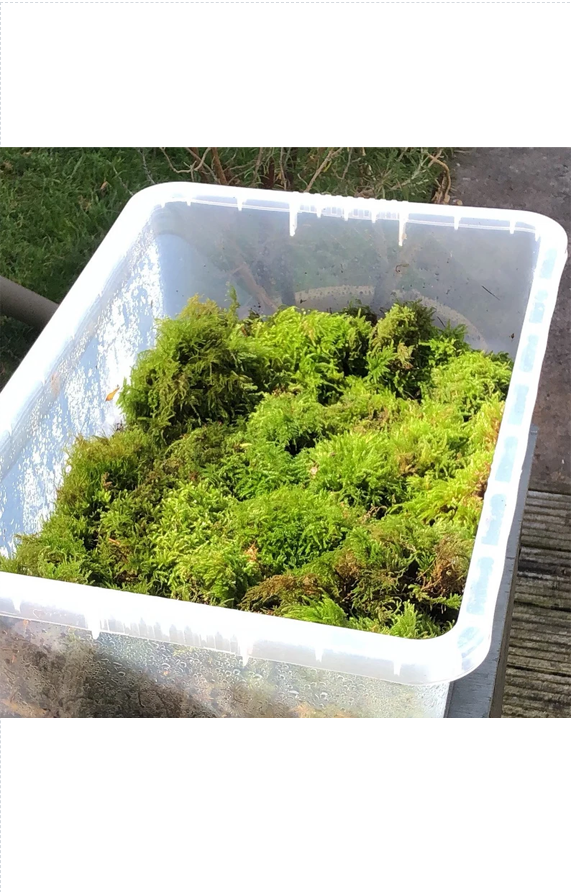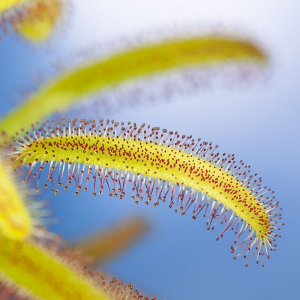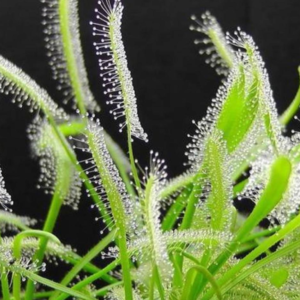Carnivorous Plants
We Stock a wide range of Carnivorous Plants. Including Sundews, Venus Flytraps and Pitcher plants.
Free Shipping
We ship from the UK and offer Free shipping on orders over £75.00. All Orders dispatched with next day delivery.
100% Money Back
Should the plant be damaged during transit we offer hassle free returns.
Sundew Plants
Shop our Sundew Collection we stock Cape Sundews, Drosera rotundifolia and other Sundew Plants.
Starter Sets
Perfect for beginners, these sets include a selection of carnivorous plants. Including Venus Fly Traps, Pitcher Plants and Sundews.
Venus Flytraps
Shop for Venus Flytraps we stock big mouth Venus Flytraps along with standard Venus Flytraps in a number of sizes.
Featured Carnivorous Plants
We stock Sundews (Drosera), Venus Flytrap (Dionaea), Trumpet Pitcher Plants (Sarracenia),Cobra Lily (Darlingtonia), Bladderworts (Utricularia) and much more! All our products are produced and shipped from the UK. If you are looking for a beginner friendly carnivorous plants starter kit, checkout our 3 and 5 set plant kits. These carnivorous plant kits include the most easy to care for plants and come with a selection of our best sellers including the venus fly traps, sundew carnivorous plant and sarracenia pitcher plants. We plan on adding a number of new carnivorous plant kits over the next year so make sure to save our website.
Fly Catcher Plants
Carnivorous Plants
Probably the most recognized carnivorous plant globally, Fly Catcher Plants, or Venus Flytraps, are also one of the trickier varieties to grow. Known for their distinct traps, you could be forgiven for thinking they were the creation of a Saturday morning cartoonist. So it’s hardly a surprise that these plants eat living things with their wide mouths and protruding tentacles that look like fangs.
Of course, unlike in Saturday morning cartoons, you won’t find Venus Flytraps eating anything much larger than a grasshopper. Their diet is varied, ranging from tiny fruit flies to full-grown crickets. Native to the Carolinas in the United States, Flycatcher plants thrive in warm, humid, very moist conditions. They derive most of their nutrition from insects and spiders, allowing them to succeed in nutrient weak soil. Venus Flytraps prefer lots of direct sunlight and occur in the wild in coastal bogs. The combination of sunlight and moisture needed by flycatcher plants makes them an excellent candidate for terrarium growth.
Dionaea muscipula is the only species of the plant, but this does not keep it from having plenty of different visual representations. Its most well-known form has bright green leaves and traps, with the internal of the trap turning bright pink as the plant ages (thereby increasing its resemblance to a mouth). However, specific cultivars remain a bright green throughout, and
others are entirely red. They all require the same growing conditions, so which variation you choose as a house plant depends entirely on your personal preference.
When growing Venus Flytraps as a houseplant, you’ll need to ensure a location with plenty of direct sunlight. If you don’t have such a naturally occurring spot in your home, you’ll need to purchase a full spectrum lamp to meet the plant’s light needs. Acidic, moisture-retaining soil and plenty of humidity are also crucial to a fly catcher’s success as a houseplant. Because they are used to a climate with four seasons, they will need a dormant period in the winter months. This combination of needs makes them a great candidate for growing in an unheated greenhouse in
much of the UK. If you choose to have it in your home, you’ll want to provide the needed humidity through a dish of stones and water in a saucer underneath the plant or a humidifier. In winter, you can encourage it to go dormant by placing it near a drafty window, in a garage, or a garden shed. However you make its environment colder, remember to protect it from the
elements. Given the proper tools, you can make a great houseplant out of a Venus Flytrap.
Tired of the same old houseplants everyone has? Looking to add something new and exciting to your home garden? Carnivorous plants are an excellent option for both the experienced and newbie gardener. Carnivorous plants are so-called because they derive most of their nutrients from insects and
spiders rather than the soil in which they grow. This allows them to grow in low-nutrient, water-logged soil that would kill many other plants. Generally speaking, carnivorous plants are native to warmer climates, such as the Cape of Africa, the Carolinas and Gulf Coast in the United States, and Australia. Some, however, occur natively in cooler climates, such as the
Drosera Anglica, which grows wild in much of the UK, and the Sarracenia purpurea, which grows as far north as southern Canada.
All carnivorous plants trap their prey in much the same way, though their physical appearance varies widely. Trumpet Pitcher plants, for instance, have tube-like traps that insects fall into, while Venus Flytraps have mouth-like traps that “catch” prey. Regardless of the shape and coloring of the trap, however, all carnivorous plants exude sweet-smelling nectar that draws
insects and spiders to them in the first place. The type of insects consumed depends on the plant’s location and size. Some stick to tiny bugs, such as fruit flies, mosquitoes, and ants, while others feast on insects as large as full-grown grasshoppers.
If you’re looking to add a carnivorous plant to your home collection, we recommend researching the proper care for your plant before purchase. You’ll find all the information you need on our site for the plants we carry, as well as the plants themselves and the necessary supplies. The one thing we can’t provide you with is the right location for your plant. Sundews, Flycatcher
plants, and trumpet pitcher plants all require quite a bit of sunlight. Ensure your south-facing windowsill has enough room for your intended new additions, or purchase a full-spectrum plant lamp to compensate for a lack of natural light. Many varieties of carnivorous plants will also do well in greenhouses or terrariums. A few can be grown in an outdoor bog garden if you have one.
Ready to dive into the exciting world of carnivorous plants? We encourage you to look through the many varieties we have in our store until you find the perfect addition for your home. Happy shopping!
Need help in choosing the right Carnivorous Plants or have any questions?
Sundew Plants UK features a wide selection of carnivorous plants including venus fly traps, sundew plants and sarracenia pitcher plants. Browse our extensive range and shop around at affordable prices; did we mention we ship all orders next day delivery, allowing your carnivorous plants to arrive safe and secure? Here at Sundew Plants we are passionate about carnivorous plants and that is why our carnivorous plants collection comprises of wide selection of plants and carnivorous plant accessories. We truly stock the most impressive collection of carnivorous fly eating plants that you will have ever seen. We sell venus fly traps, sundew plants and sarracenia pitcher plants, venus fly traps seeds, carnivorous compost and even carnivorous feed, allowing you to keep healthy plants all year round. Browse around our website and shop for venus fly traps, sundew plants and sarracenia pitcher plants and more. Should you require any help or advice please contact us via the contact us form located at the top of this page.
Shop a wide range of Carnivorous Plants
We stock a wide range of types of carnivorous plants. Check out our top three insect eating plants.
When people think of carnivorous plants the first plant that comes to mind is the Venus Flytrap, known as the Dionaea. In our shop you will find a variety of Venus flytraps for sale from giant Venus fly traps to Venus fly trap seeds.
Buy Venus Flytrap Plants
Venus Flytrap
We stock a number of sarracenia plants including sarracenia purpurea, sarracenia flava, sarracenia juthatip soper, sarracenia judith hindle and a number of other trumpet pitcher plants. All our trumpet pitcher plants are sold by height.
Buy Sarracenia Plants
pitcher plants
Are you looking for the ultimate insect eating plants? Then the Drosera sundew plant is the plant for you. We stock Drosera anglica, Drosera capensis, Drosera capensis alba, Drosera Rotundifolia and Drosera spatulata. The Sundew plants are not only the best fly eating plants they are also easy to take care of.
Buy Sundew Plants
Sundews
Venus Fly Traps
Sundew plants
Pitcher Plants
Venus Flytraps, or Dionaea muscipula, are a carnivorous plant native to the coastal regions of North and South Carolina in the United States. There is only one genus of the species, though it can occur in varying shades of green and red. The most commonly recognized cultivar is bright
green on the outside, with a magenta “mouth.”
Venus Flytraps survive in soil weak in nutrients and get their needed nitrogen from insects, such as mosquitos, flies, and spiders. They thrive in very wet conditions. Though they get their nutrients from insects rather than the soil, they are photosynthetic plants and still require a great deal of sunlight to survive.
Dionaea muscipula have become a common houseplant among carnivorous plant lovers. They are, however, one of the trickier carnivorous plants to grow as they are pretty particular about
their environment. They require much higher humidity – at least 60% – than many houseplants,
even other carnivorous ones. Combined with their need for a dormant period each winter, they are an excellent choice for outdoor greenhouses in the UK.
Don’t be discouraged, though, if you have your heart set on a Venus Flytrap and don’t have a greenhouse. With some research and TLC, your Venus Flytrap will thrive as a houseplant. Make sure to take a look at the care guide we provide on our site. Happy shopping!
The Drosera genus includes some of the easiest to grow carnivorous plants. Their common name of Sundew plants comes from the fact that, in sunlight, they appear to have tiny drops of
dew on the ends of their tentacles. These small drops and hair like tentacles exude a sweet smell and are what attract bugs to them in the first place. Once drawn in by the nectar, the insects are then stuck to the fine hairs and slowly entrapped for the plant to consume.
Sundew plants also boast some of the most beautiful presentations of carnivorous plants. Their
tentacles are often a brilliant red color, and many varieties of the plant can flower almost continuously in optimal conditions. The flowers of Drosera plants vary in color from white to light pink to occasionally light purple.
The Drosera Anglica is one of the few sundew plants that grow natively in the UK and is thus a great choice if you’re looking for a carnivorous plant to put in your home bog garden. But, of course, the English Sundew will also do well as a houseplant.
Our shop carries a wide variety of Sundew plants, each with its own unique look. If you’re a beginner to carnivorous plants, the Drosera is an excellent choice. Be sure to check out our growing and care guide to get the most beauty from your plant.
Sarracenia, also known as Trumpet Pitcher plants, are beginner-friendly carnivorous plants.
Native to North America, they grow all up the East Coast and into the Midwest of the United States and Southern parts of Canada. There are eight recognized species and many, many
subspecies and hybridizations. Trumpet Pitcher plants are one of the few plants in the world that
hybridize themselves. Combine those varieties with artificially hybridized versions, and the
colors and types of Sarracenia are almost endless. The Sarracenia purpurea can be grown
outdoors in the UK, but all species can thrive indoors.
The Pitcher plant gets its name from its trap, which looks like a pitcher. However, unlike other
varieties of carnivorous plants, Sarracenia have a passive trap: Rather than enclosing their prey,
insects are attracted to the nectar at the bottom and fall into the trap, from which they are then unable to get out.
Trumpet Pitcher plants need a great deal of sun and are likely to thrive in only the sunniest of window sills. As such, most home growers will need to supplement with a full-spectrum plant light. If you’re the lucky gardener with a greenhouse, your Sarracenia will thrive there as well.
When it comes to purchasing a Pitcher plant, the only thing holding you back is all the choices!
You will have so many color and height options to choose from that every home gardener is sure to find one to love. Once you’re ready to make your purchase, don’t forget to check out our Pitcher plant care guide to get the most beauty from your plant.
Living Sphagnum Moss
Are you looking to buy Live sphagnum moss? We are a UK based grower who stocks living sphagnum moss for sale. Our live sphagnum moss can be found directly in our online store. Buy Living Sphagnum moss
All Live sphagnum moss for sale is sold in a number of container sizes making sure it suits your needs.
Unlike other sphagnum moss retailers all our living sphagnum moss is grown in a sterile environment, meaning it comes bug and contamination free and ready to use.
sphagnum moss is multifunctional, use our living sphagnum moss as a topdressing for your carnivorous plants, it looks beautiful on pitcher plants. You can also use our live sphagnum moss for venus fly traps and just about any other fly eating plants.
Live Sphagnum moss can also be used for orchids or mixed with Perlite to make water retaining soils, perfect for growing carnivorous plants or orchids. Did we mention that Sphagnum moss for propagation is one of the best mediums to produce healthy seedlings?
What is Sphagnum moss?
Sphagnum moss is part of a large genus of moss which includes some 380 members and is normally harvested from wetlands or bogs, it falls into the peat moss family. Please note that Sphagnum moss and sphagnum peat moss are different. Living sphagnum moss is found on top while peat moss is the organic matter below the living sphagnum moss, in both instances peat moss is a carnivorous plant growers best friend.
living sphagnum moss makes for an amazing top dressing in carnivorous plants or mixed to form medium. One of the main reasons for using living sphagnum moss is its ability to retain moisture in potted plants, it also offers a aesthetic look in terms of its beautiful tones of fibrous swirls.

Interested? Shop a wide selection of carnivorous plants!
Start your carnivorous plants collection today and watch these beautiful fly eating plants grow into beautiful colorful works of living art.

